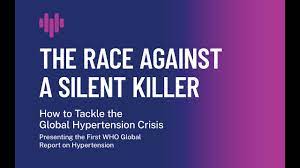Global Report On Hypertension: The Race Against a Silent Killer

During the United Nations General Assembly’s (UNGA) 78th session, the World Health Organization (WHO) released a report titled “Global report on hypertension: The race against a silent killer.”
- It is the first-ever report by the WHO on the worldwide implications of hypertension, commonly referred to as high blood pressure.
Key Highlights of the Report:
- One in three adults across the world suffers from hypertension.
- The number of hypertension cases has doubled from 650 million to a staggering 1.3 billion between 1990 and 2019.
- Hypertension affects approximately 33% of adults aged 30-79 worldwide.
- Approximately four out of every five people with hypertension are not adequately treated.
- India alone has an estimated 188.3 million adults aged 30–79 years grappling with hypertension.
- The prevalence of high blood pressure in India is slightly lower than the global average of 31%.
- To reach a 50% control rate, India needs to ensure that an additional 67 million people with hypertension receive effective treatment.
- If the progress scenario were achieved, 4.6 million deaths due to high blood pressure would be averted by 2040.
- About 80% of individuals with hypertension do not receive adequate treatment.
- Effective hypertension treatment has the potential to prevent 76 million deaths, 120 million strokes, 79 million heart attacks, and 17 million cases of heart failure by 2050.
- Treatment coverage for hypertension exhibits significant disparities among countries, with high-income nations having a more favourable coverage rate.
- The WHO region of the US leads with a 60% coverage rate, while the African region lags behind at 27%.
- More than three-quarters of adults with hypertension live in low- and middle-income countries.
- Nearly 30% of individuals with uncontrolled hypertension exhibit blood pressure measurements above the threshold warranting urgent treatment.
- Globally, the percentage of adults aged 30–70 taking medication for hypertension has doubled from 22% in 1990 to 42% in 2019.
- Effective treatment coverage has quadrupled during the same period, reaching 21%.
- The WHO calls for prioritising the prevention, early detection, and effective management of hypertension as part of national health benefit packages.




